Click on the first image below to see a timeline of the Robin’s story in the picture viewer.
The Robin was a visitor to our garden who had a liking for the suet sticks I was putting out in a bird feeder. He liked them so much that he very readily took them from our hands and became very tame. I think his liking for suet became an addiction to the extent that eventually he would pester us for food, waiting on the door handle of our back door for us to arrive home and then hopping into the kitchen when we opened the door. He wasn’t fussy about who fed him; we had people working on our kitchen or painting the outside of the house who were strangers to him but who were equally pestered and fascinated by his behaviour. He would also spit out (or the ornithological equivalent of spitting, if there is one) insects in favour of his preferred suet habit.
Whilst he was very tame to us and other humans he obviously felt the need to protect his investment in establishing the relationship and he was very aggressive to other birds, particularly other Robins. When we first “made contact” he had two healthy legs but one day we noticed that he would stand on one leg with the other leg tucked up amongst his feathers. In the later photos of him, you can see a prominent bulge on his right leg and an obvious break when seen from behind. Maybe the suet was an easy option when he could only hop around on one leg when searching for insects in the garden.
Our relationship with the Robin lasted just over 3 years. He then just disappeared and I guess he came to the end of his life which was reasonably long for a Robin. Apparently 25% of Robins don’t make it through their first year, although some can live into their teens. →
Our Robin reared at least one successful fledgeling and inevitably that was fed on a diet consisting largely of suet as far as we could tell.
In the years since 2009, we have always had a Robin covering our garden in its territory but have not been able to repeat the relationship we had with the one-legged one. In fact, subsequent generations have shown no interest in suet sticks whatsoever. I wonder if the legend of Grandfather / Great Uncle One Leg and his exploits put them off…
Fast forward to 2020 and we have a healthy population of Robins in the area of the garden. Last summer our resident pair had, we think, three successful broods of at least one young each. Over the winter there were three adult Robins bumping along nicely together sharing the available food supply. Now in early May, we have a pair of Robins with a brood of three fledgelings slowly eating us out of bird food. Dried mealworms appear to be the food of choice these days.
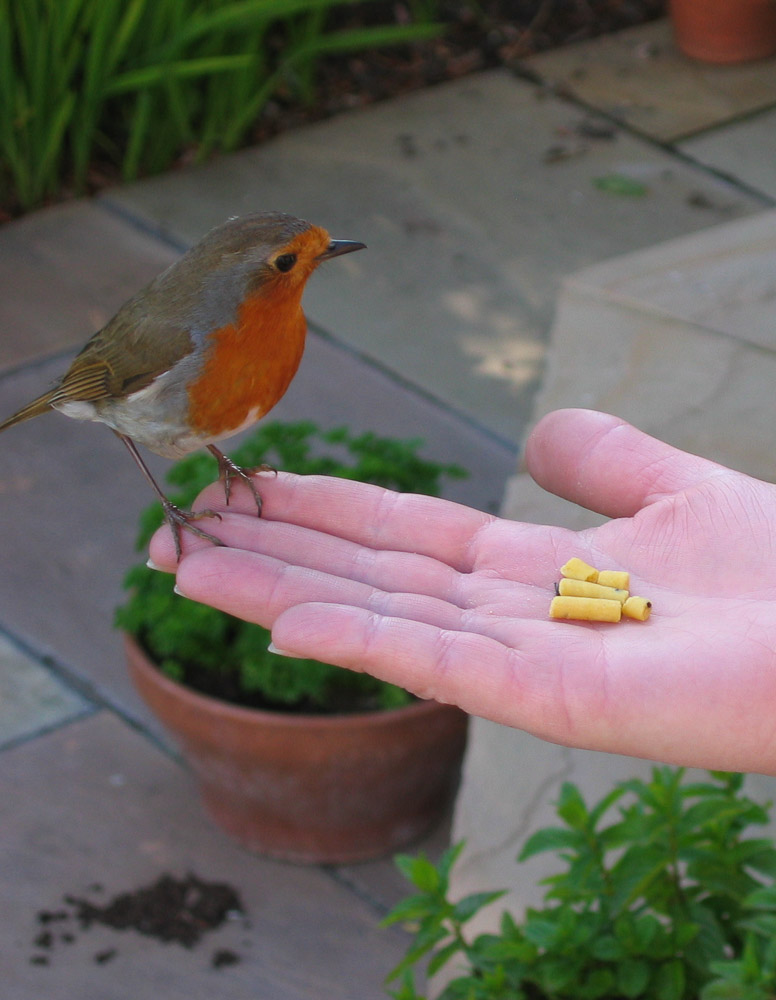
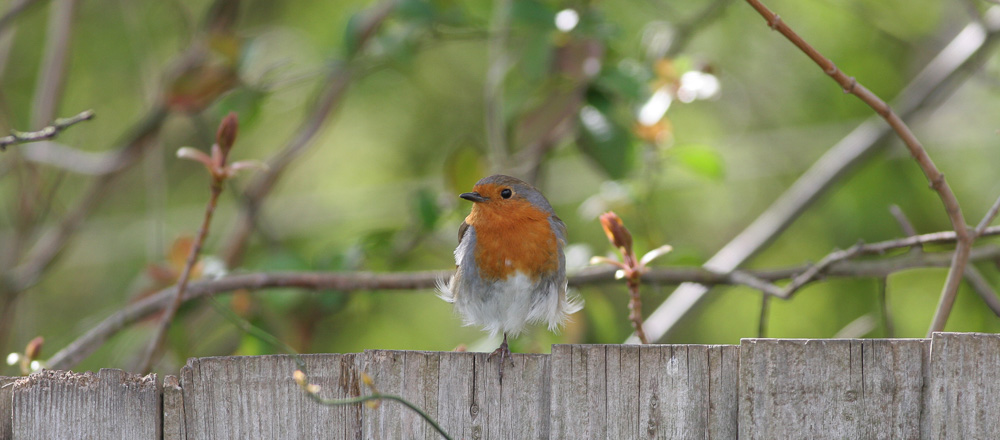
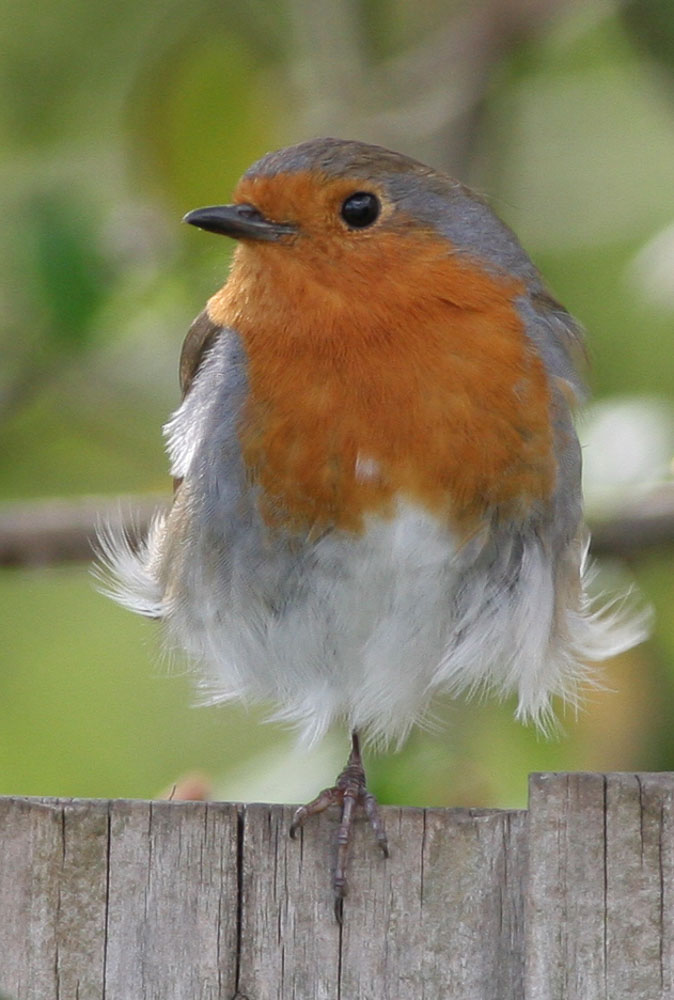
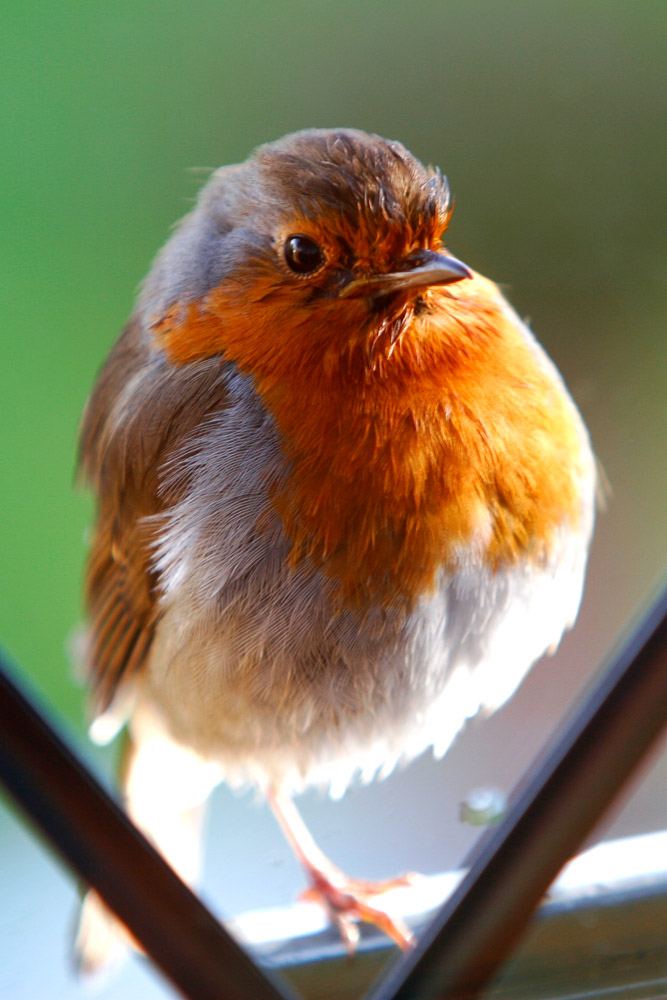
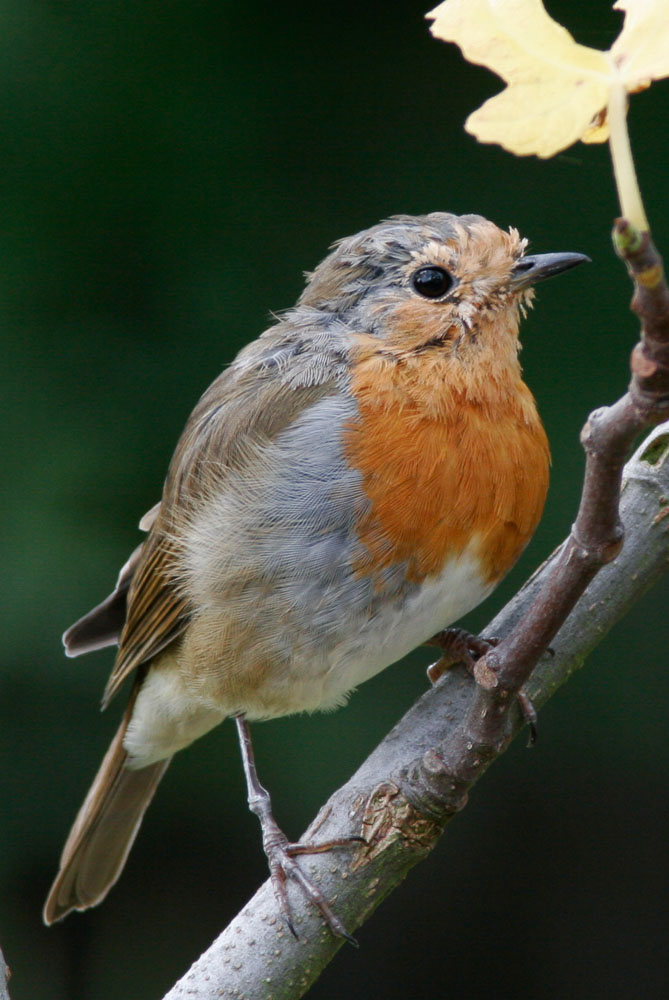
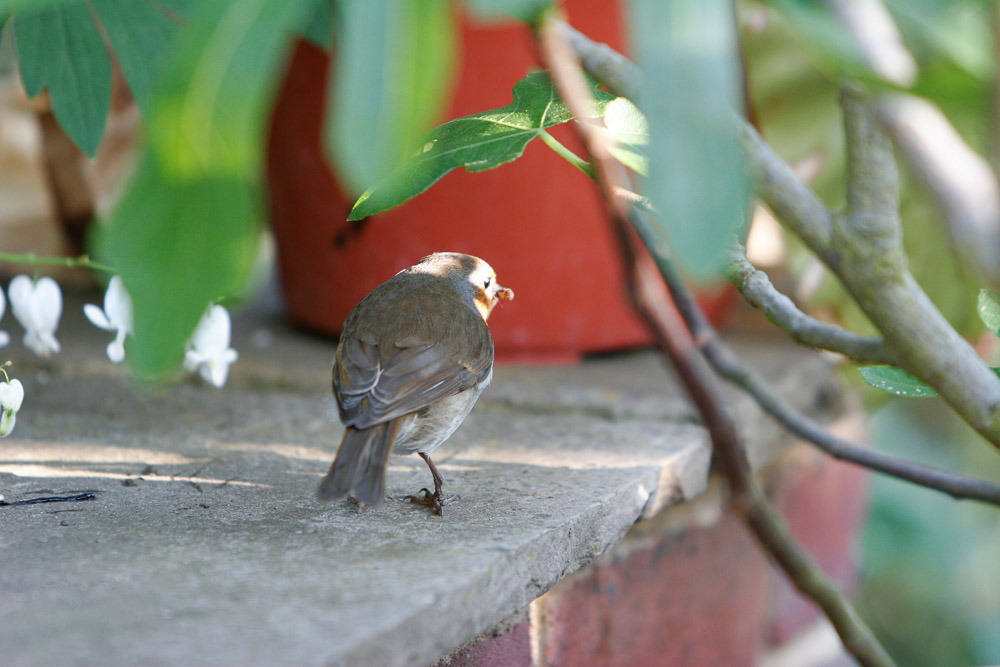
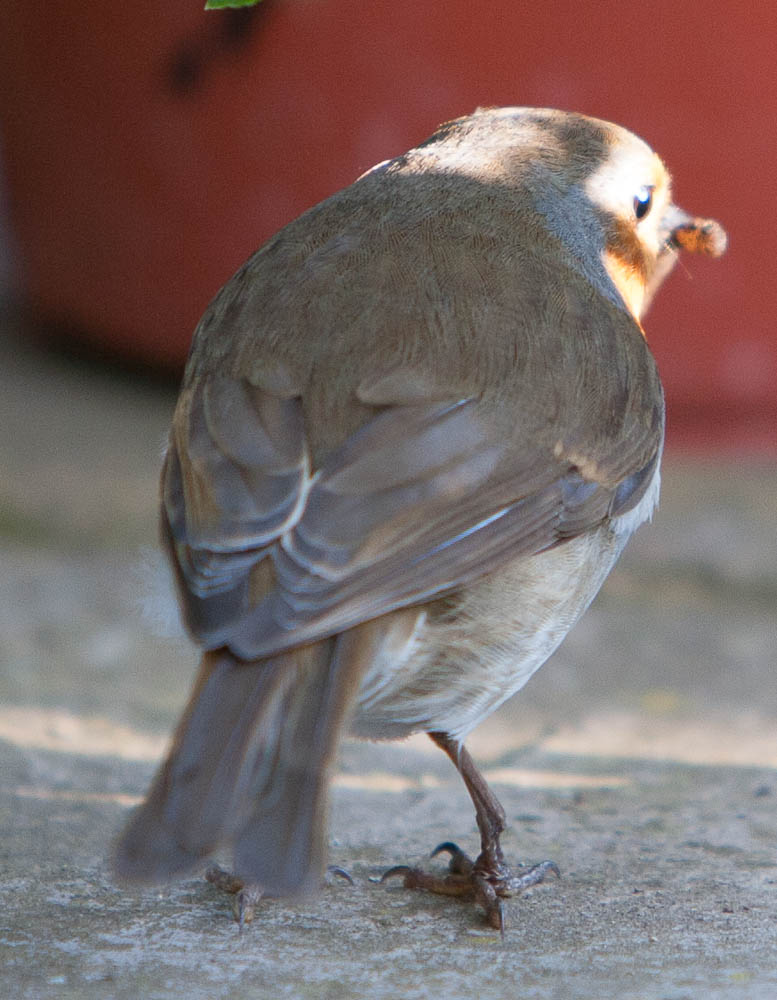
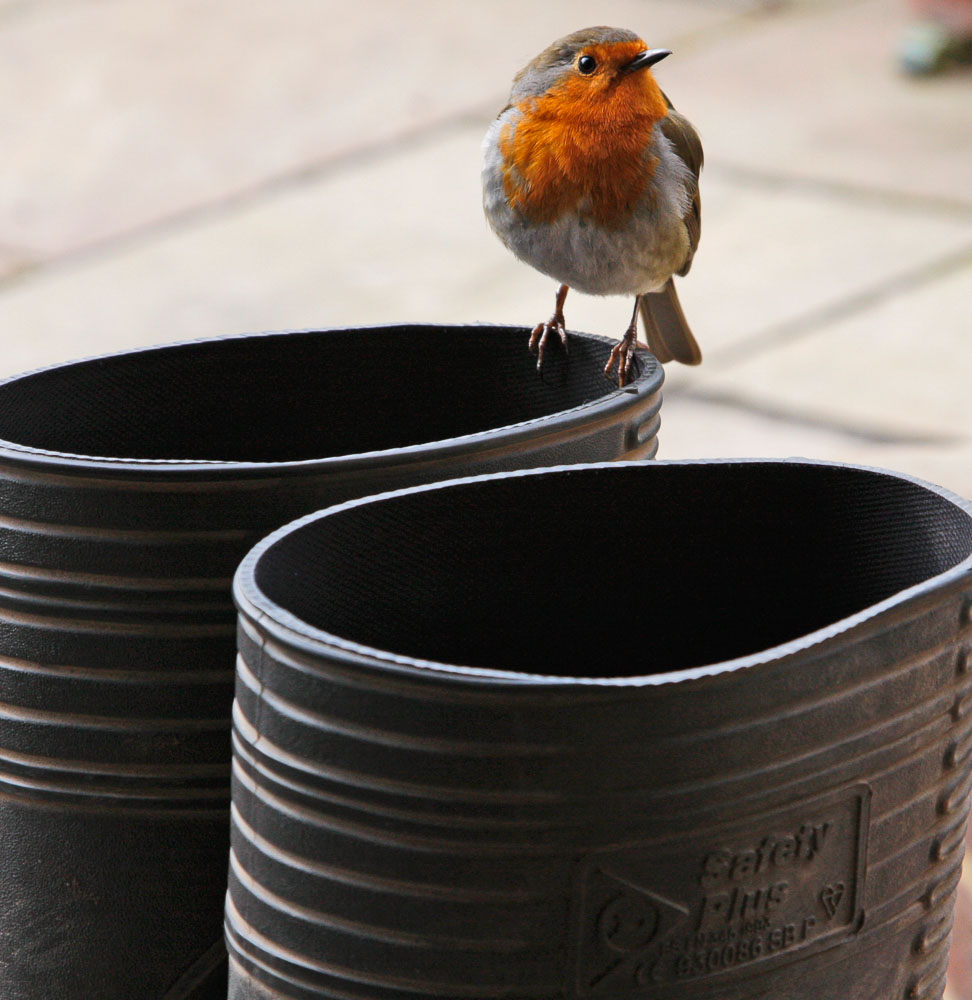
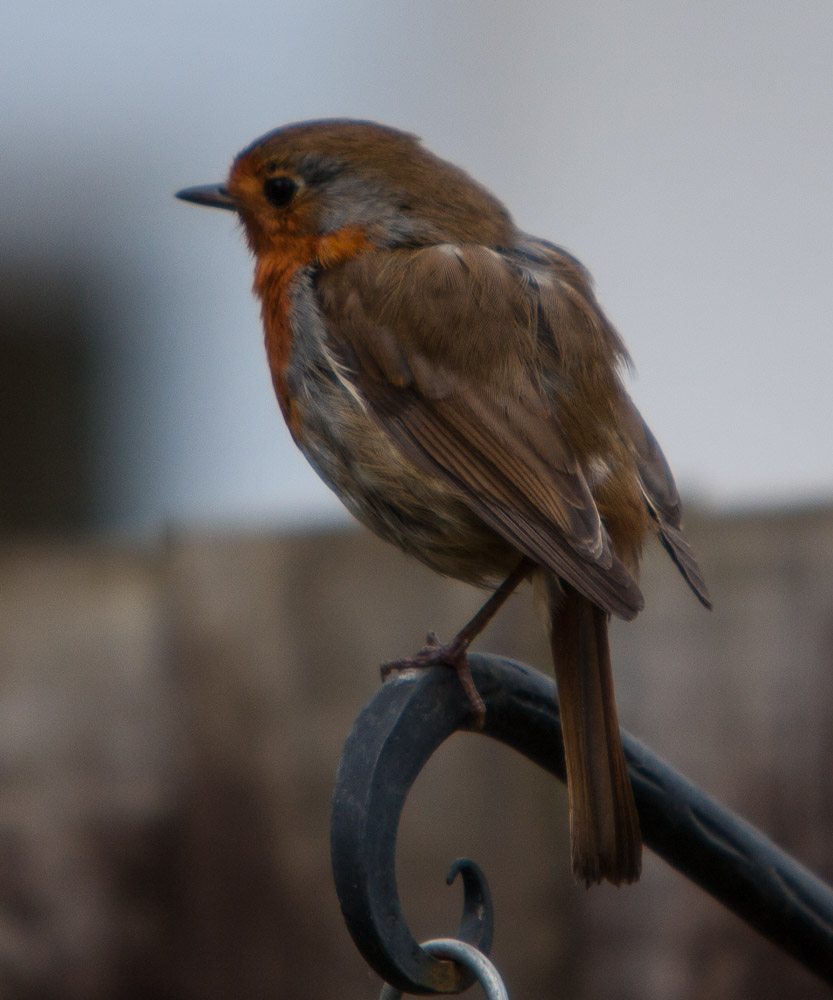
We have a one legged Robin with the story being so similar. However she took a liking to cranberries and apples. Good life lesson as she soldiers on. We will see next year if she returns. She is one of our daily high points.
Hi Gerald, thank you for your comment and sorry it has taken me a while to respond but I have been travelling in the wilds of Scotland. It’s good to know that another injured Robin has found a good home. We have tried in vain to tame our most recent resident but he/she refuses to take food from our hands. I guess when they are injured desperation removes that bit of fear.
I have a robin that seems to come and “ask” for a feed by bouncing on the bird table as I make the morning coffee. He/she waits on the bird table while I get the grated cheese that’s the preferred bird food it seems. During the lockdown these daily visits lifted my mood in a way I found surprising.
The robin’s looking a little bedraggled lately. Today we shared an extended moment where he/she had a beak full of red Leicester and then sat in the sun and rewarded me with a song. Magical stuff
Thanks for your comment. It is quite special to get that bond with a wild animal. The Robin is training you…
I beg your pardon, but that does not look like any Robin I have ever seen.
Really? Where are you based? This is Erithacus rubecula – see here. Very common in the UK.
Love the story about your robin
I’ve been so lucky recently to be adopted by one it makes my day when I get up and he’s waiting gmcir me and when I get back home , love the interaction with this wild little bird he even jumps on my knee when I’m sitting in the garden , but today I returned home and the robins leg seems to be injured holding it up into its body can’t see if it’s broken or just from fighting with the rival robin
Hope he be ok as I’m so very fond of him and I’ll keep up with the sunflower hearts and mealworms
Hi Leigh, thanks for the comment. I’m sure your Robin will be fine, they are hardy little things. Over the winter here we had a daily visit from a Pied Wagtail to eat mealworms that we put out. He (or she) had a very poorly foot; I suspect it was infected, possibly viral. Long story short he visited every day and I could see the foot getting slowly worse, until one day – no foot! He seemed happy enough, in fact, he seemed to be happier once the foot had amputated itself. He even brought some friends with him on a few occasions. I haven’t seen him for a couple of months but that is not unusual as Pied wagtails are only winter visitors in my garden. Enjoy your Robin’s company.
Thanks for replying, yes he’s fine in himself a little unstable when he lands but is day 3 the leg has been like this so I think ? it will be the same a the wagtail
I enjoy him coming to visit me enormously so just see how it goes with his foot but I’m always here to feed him ?
Much the same as many others, our robins are mad on dried mealworm and will be gathering up to every 30 seconds in visits to the nest. They will be peering in through the kitchen window first thing in the morning waiting to be fed. If we inadvertently leave the kitchen door open will come in and hop around.
They often exhibit one leg standing but its difficult to tell if it is injury or otherwise, their legbones are incredibly thin and possibly easily strained by bad landing or scraping in the confines of a nest.
We have been lucky to be chosen this year by robin parents to be. Mealworms eaten from our hands are their favourite and if we leave the pot out they just help themselves!
The male is dominant and started to eat from our hands and the female follows his lead but a lot more nervous.
They take mealworms from our knee as well if sat down before eating or shooting off to the nest. Again the denial is a little more nervous.
The fledglings walked out of the nest on Thursday, little bundles of feathers and eyebrows, no fear, no idea what the heck to do other than sit and be fed. Mum and dad got them to safety and within a day they were able to fly into our trees and bushes for cover.
Getting up at 5am to make sure early cat visitors weren’t around has become habit this week.
They are wild birds and the connection is survival for them, but still all rather sweet. And we are pleased they chose us. And yes the male sits on our knee on one leg – resting in his case.
Enjoyed your article and our connection with this hardy hard working bird family.